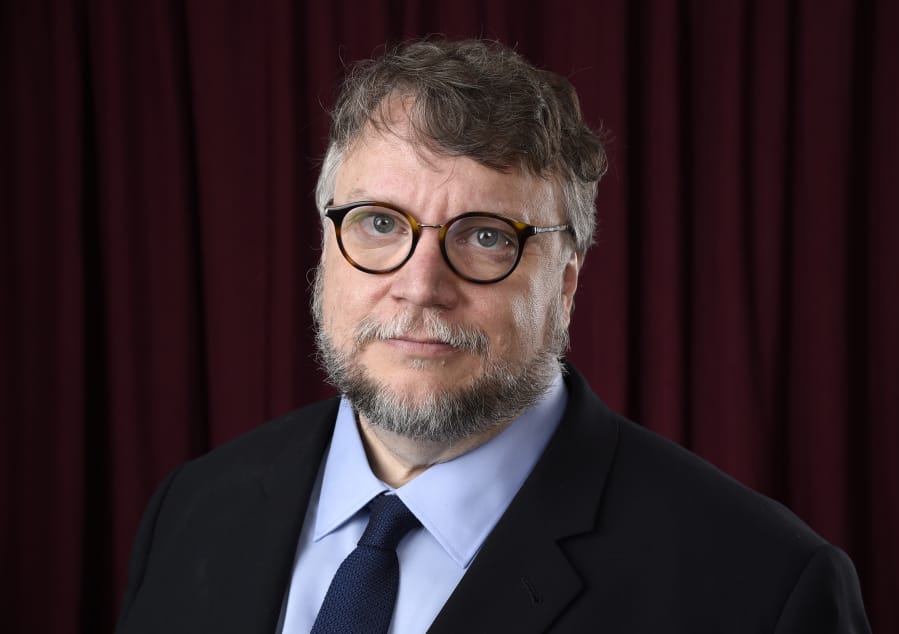PORTLAND — The Portland filmmakers behind a new telling of “Pinocchio” were well into production in March when the coronavirus hit Oregon and put everything in doubt.
The new “Pinocchio,” from Oscar-winning director Guillermo del Toro, is being shot with an artisan technique called stop-motion. Animators manipulate figures, one frame at a time, to simulate motion — creating a tactile effect especially well-suited for the tale of the famous puppet.
What works well on screen, though, won’t necessarily fly in a pandemic. Stop motion takes place on a set, and animators typically collaborate in the studio with colleagues who build, dress and film the puppets.
“Pinocchio” shut down for more than two months, beginning in March when the coronavirus outbreak came to Oregon. Filmmakers scrambled to figure out how they could go on without endangering the health of their crew.
ShadowMachine, the animation studio filming the new “Pinocchio” for Netflix, came up with a patchwork of solutions. Many of the film’s artists are building their sets, puppets and costumes at home. One crew member turned his barbeque into a soldering station.
On set, animators and crew cycled through over the course of each day — passing off tasks from one to another to limit the number of people in the studio.
“It’s working and it’s all evolving,” said Alex Bulkley, ShadowMachine’s co-founder. “If there’s anything we’ve learned, it’s that we’ve all got more to learn.”
Oregon filmmakers have continued shooting movies, TV shows and commercials this summer, defying the pandemic with a variety of imaginative workarounds from one-person shoots to creative repurposing of stock footage.
In aggregate, the volume of work in Oregon appears to be roughly half what it might have been without the pandemic. Business has recovered considerably, though, giving production houses hope for the future.
“I’m cautiously optimistic and I’m somewhat pleased at how the industry has responded,” said Tim Williams, head of the Governor’s Office of Film and Video.
Productions around the world shut down early this year, from Hollywood blockbusters to shoestring independents. The pandemic made traditional, live-action filmmaking inconceivable — large crews working on an indoor set, with everyone eating from the same buffet.
Filmmaking has resumed, haltingly, especially in parts of the world where coronavirus infections are relatively low. It hasn’t always gone well.
Vanity Fair reported last week that production on “The Batman” shut down in London when the newest Bruce Wayne, movie star Robert Pattinson, tested positive for the coronavirus.
The Los Angeles Times reported that a 51-year-old assistant director from Texas died of COVID-19 after working on a commercial shoot. It wasn’t clear whether he contracted the coronavirus while working, but his death spooked filmmakers all over the world.
Portland commercial director Slater Dixon said he’s continued working during the pandemic, but on roughly half as many projects as he would ordinarily shoot. With everyone’s workload down, firms are bartering skills and services to help each other out and set themselves for an eventual rebound.
“There is some comfort in the fact that we’re all in this together,” Dixon said. “Nobody has it figured out. We’re all doing the best we can.”
Crews are limited to no more than two dozen and they’ve implemented a variety of safety protocols to ensure sets are clean, everyone has masks and nobody has a fever. Crews now include a “COVID compliance officer” to make sure everyone is following established safety protocols.
That makes work safer but also slower and more expensive, often moving at half the rate it ordinarily would.
“Everything is going to take considerably longer,” said Mark Axton, a producer with the Portland production studio Hinge, which specializes in TV commercials. “The thing is, the clients are not going to want to pay that difference.”
So that’s squeezing studios’ bottom line even as the workloads trail off. Feature films and TV shows are facing a similar calculus.
“Financially it has been a really interesting math problem for a lot of people,” said Williams, with the Oregon film office. He said there are half as many productions now as there ordinarily would be this year.
The added expense is especially hard to bear for the kind of small features Oregon is known for, like the indies “Leave No Trace,” “First Cow” and “Phoenix, Oregon.”
“That would be a tough one to do right now,” Williams said.
Even Laika, the Hillsboro stop-motion studio owned by Nike billionaire Phil Knight, has found it tough going. The studio — known for “Coraline” and “Kubo and the Two Strings” — laid off 56 last month, cuts it attributed to coronavirus health restrictions that limited the number of people who can be at the studio.
Portland’s film industry has one advantage, in that many studios specialize in animation. Computer-generated shows can often can be done remotely.
“It just really didn’t miss a beat,” said ShadowMachine’s Bulkley. The studio does computer animation for a number of TV programs, including “Final Space,” “Tuca & Bertie” and “10-Year-Old Tom.”
“Artists were not only OK with it, but happy I think to start a remote work pipeline,” Bulkley said.
“Pinocchio” was more difficult, he said, because of the physical nature of stop-motion animation. But he said the crew has adapted cheerfully to the working conditions and safety protocols. Even before the pandemic, del Toro was in Portland intermittently — reviewing footage remotely as his co-director, veteran Portland animation director Mark Gustafson, ran the production locally.
So the “Pinocchio” crew had experience with remote work coming into the pandemic. While it’s easy to chat over a video call, Bulkley said it takes vigilance to ensure everyone understands the nuances of a remote conversation.



